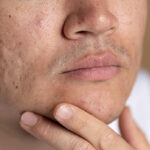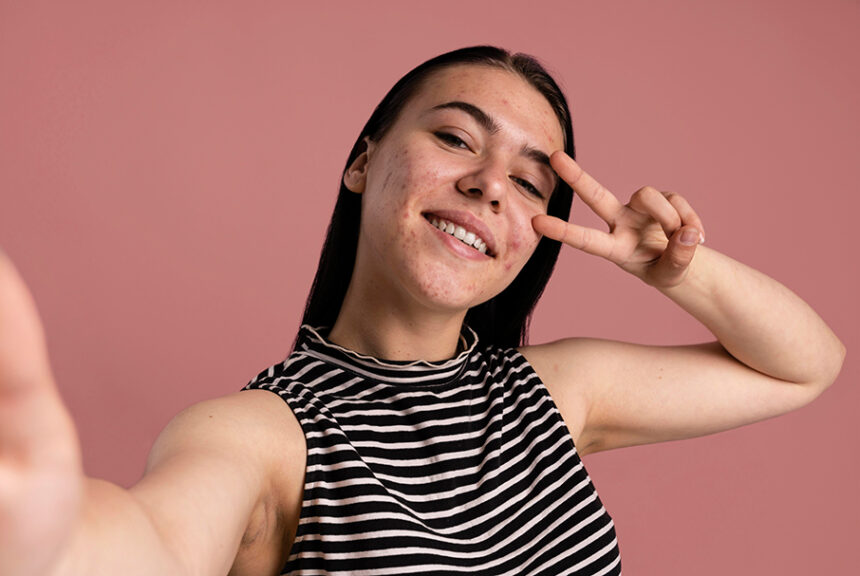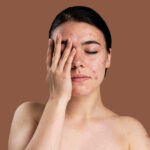Acne scars operate as a continual reminder of the difficulties the condition brings many years after active outbreaks have ended. In besides affecting skin texture, these various types and intensities of scarring also affect self-esteem and confidence. But thanks to developments in dermatology, several successful treatments exist to reduce the look of acne scars and provide smoother, healthier skin. Among these, tretinoin and tretinoin cream are very flexible solutions for scar correction. The several forms of acne scars, their causes, and the best treatments for them are covered on this page.
What Causes Acne Scars?
After the inflammation the illness causes, the skin heals naturally with acne scars. Deeper layers may suffer when the skin gets inflamed; hence, the body has to cure itself by generating collagen. Scarring results from either too little or too much collagen the body produces. The degree of scarring varies with inheritance, degree of acne, and if the acne was treated right away.
Three basic categories allow one to usually categorize acne scars:
- Atrophic Scars: These result from the loss of collagen and show up as skin depressions. Typical types include narrow, deep ice pick scars, boxcar scars (broad with distinct edges), and rolling scars (large and wave-like).
- Hypertrophic Scars: The body creates excessive amounts of collagen throughout the healing process, which causes raised scars. Usually speaking, these show up on the back and chest.
- Post-Inflammatory Hyperpigmentation (PIH): While not a scar in and of itself, PIH is marked by dark or discolored spots that persist after acne has cleared up. Those with darker skin especially find this very typical.
The Role of Tretinoin in Scar Treatment
Among the greatest topical therapies for acne scars is retinoin, a vitamin A derivative. Well-known for boosting cellular turnover, tretinoin helps aging damaged skin cells shed and generates new, healthier ones. This procedure not only enhances general skin tone and texture but also reduces the look of superficial atrophic scars.
Regular administration of tretinoin cream increases collagen synthesis, which, over time, is essential for the filling of depressed scars. Treating rolling and boxcar scars is much improved by the enhanced collagen’s ability to restore lost volume and smooth the skin. Also quite successful in treating post-inflammatory hyperpigmentation, tretinoin regulates skin tone and progressively lightens dark spots.
Using tretinoin calls for both dedication and patience since, obviously, noticeable effects could take many months. Common early side effects as the skin changes are redness, dryness, and peeling. To prevent irritation, use tretinoin cream at night and a regular moisturizing agent. Daily sunscreen is quite important as tretinoin improves the skin’s UV ray sensitivity.
Additional Treatments for Acne Scars
Though tretinoin is rather potent, it would not be enough for all kinds of scars, especially elevated or deep ones. It will be best to use tretinoin with other skin treatments.
- Chemical Peels
Chemical peels exfoliate the top layer of skin using a solution, therefore promoting the development of fresh, smoother skin. While deeper peels target atrophic scars, shallow peels help to minimize discoloration produced by PIH. These medications boost the effects of tretinoin, therefore improving its benefits. - Microneedling
By means of tiny needles, microneedling—also known as collagen induction treatment—causes under control micro-injuries in the skin. This increases the body’s natural healing reaction, which stimulates collagen synthesis and helps improve the appearance of the atrophic scar. Combining microneedling with topical therapies like tretinoin cream will assist in boosting its effectiveness. - Laser Resurfacing
Laser scar treatments rank among the most sophisticated ones available. Fractional lasers target particular locations to help with collagen remodeling and lower scar depth. Even if they call for extended recovery times, ablative lasers—which destroy the outer layers of the skin—are highly successful for severe atrophic scars. - Dermal Fillers
By raising the skin to the same level as surrounding tissue, dermal fillers quickly repair deep atrophic scars. Although fillers produce immediate benefits, their effects are temporary—usually lasting several months to a year. - Subcision
A needle inserted under the skin with the minimally invasive subcision technique splits the fibrous bands, attaching the scar to deeper layers. This lets the skin rise and flattish out. Subcision can have long-lasting effects when working with tretinoin. - Excision
Severe ice pick scars could require surgical excision. Under this technique, the skin is sutured to provide a more smooth look after surgical scar removal. After surgery, tretinoin lotion can help the region heal and minimize newly developed scars.
Preventing Acne Scars
The first step in avoiding scarring is good control of acne. Early treatment of active acne and avoidance of activities like picking or squeezing blebs greatly lower the incidence of scarring. Here are a few additional possibilities worth giving thought to:
- Timely Treatment: Consult a dermatologist about prescription medications like tretinoin to manage acne and prevent lesions from getting worse.
- Hydration and Skincare: Maintaining the skin’s natural barrier decreases inflammation and irritation. One gets this by utilizing non-comedogenic moisturizers.
- Sun Protection: UV radiation could worsen scars and slow down the healing process. Using a broad-spectrum sunscreen with SPF 30 or above is pretty crucial daily.
- Healthy Lifestyle Choices: Regular exercise, a balanced diet, and stress reduction help to boost general skin health and hence reduce the chance of acne and scarring.
Emotional Impact of Acne Scars
Sometimes, the way acne scars look matches their emotional toll. Many people discover that scars lower confidence and self-esteem by always reminding them of past acne fights. Healing scars enhances not only beauty but also greatly affects mental health. A good attitude and reasonable expectations will help to make the road towards better skin more fun.
Encouragement of patience and recognition of progress—no matter how little—helps friends and parents, too. Tell acne-scarred patients that treatments take time, and that slow changes usually show up over months or years.
Conclusion
Although they could seem like a permanent reminder of the past, contemporary therapies greatly minimize the appearance of acne scars. Still the cornerstone of scar treatment, tretinoin cream provides a safe and efficient method of encouraging skin renewal and texture enhancement. Tretinoin can improve outcomes when paired with other treatments, including laser therapy, chemical peels, or microneedling, enabling people to get smoother, more transparent skin.
Disclaimer: The information provided on this blog is for informational purposes only and should not replace professional medical advice.







